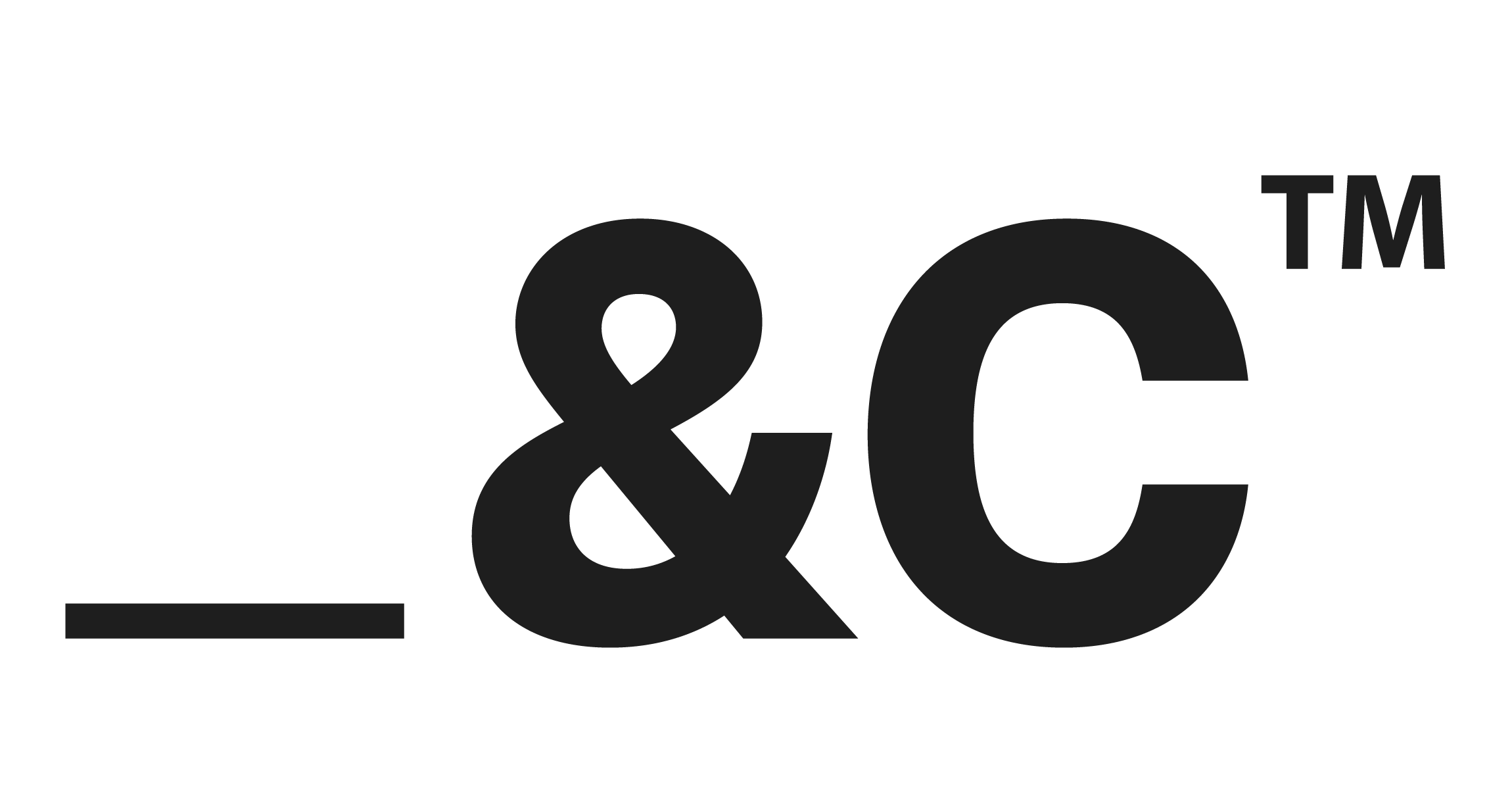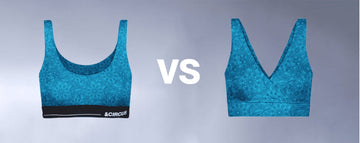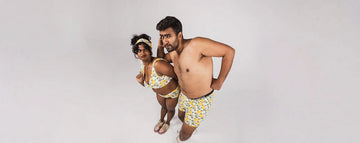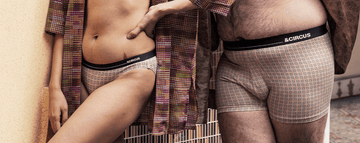Quick Listen:
In the sultry chaos of Mumbai's markets or the relentless pace of Bengaluru's tech hubs, a subtle but seismic shift is reshaping how India dresses underneath. Innerwear, long tethered to rigid structure and seductive aesthetics, is breaking free from its push-up past. From Maharashtra to Tamil Nadu, Delhi to Telangana, urban consumers are gravitating toward breathable, eco-conscious fabrics that sync with their lives comfort over constriction. This isn't a fleeting fashion fad; it's a cultural redefinition, driven by body positivity, sustainability, and a post-pandemic demand for ease.
Comfort-First vs Push-Up: Why India's Innerwear Preferences Are Evolving
Tailor and Circus, a direct-to-consumer innerwear brand, is at the forefront of this transformation, championing sustainable, eco-friendly undergarments that prioritize function over flash. Unlike the lingerie giants of the early 2000s, which leaned heavily on padded bras to sculpt idealized silhouettes, Tailor and Circus emphasizes simplicity. Their signature fabric mix, featuring micromodal a plant-based, moisture-wicking material pairs with fuss-free construction to suit India's humid climates and urban grind. Whether you're dodging traffic in Delhi or sipping filter coffee in Chennai, their innerwear moves with you, not against you.
This shift reflects a broader global trend. The global bra market, valued at USD 25.18 billion in 2024, is set to reach USD 51.09 billion by 2032, growing at a compound annual growth rate (CAGR) of 9.32%. Asia Pacific, fueled by India's expanding middle class, commands a dominant 91.19% market share. Yet, as Vogue Business observes, post-pandemic consumers are no longer enamored with the bra with a capital B. They prioritize comfort, fit, and versatility some even forgoing bras altogether.
The Rise of Comfort as a Movement
The pandemic rewrote the rules of innerwear. Remote work blurred the boundaries between public and private attire, rendering stiff, wired bras obsolete for many. The rise of body inclusivity challenged the narrow beauty ideals that push-up bras once epitomized. In India's sweltering cities think Gujarat's Ahmedabad or Kerala's Kochi micromodal has become a game-changer. Derived from beech trees, this sustainable fabric is soft, breathable, and eco-friendly, unlike the synthetic blends that dominated lingerie racks a decade ago.
Tailor and Circus capitalizes on this with gender-agnostic prints and seamless designs that resonate with a younger, expressive demographic. On Instagram, influencers like theurbandandy and taleofourtrails amplify this shift, promoting slow fashion and comfort-driven choices to followers across Maharashtra, Karnataka, and Tamil Nadu. These creators don't just showcase products; they advocate for a lifestyle where innerwear reflects individuality, not conformity. This ethos aligns with the preferences of urban youth in cities like Hyderabad and Pune, where self-expression trumps tradition.
The numbers back this up. Expert Market Research forecasts the global bra market to hit USD 54.54 billion by 2034, with India's market growing at a robust CAGR of 7.1%, outpacing China's 5.9%. This growth isn't just about sales; it's about a shift in values, where comfort and sustainability are non-negotiable.
The Decline of the Push-Up Era
Push-up bras, once the gold standard of allure, are losing their luster. The Guardian highlights an underwear revolution prioritizing comfort over cleavage, a sentiment echoed in India's urban centers. Customer feedback for Tailor and Circus reveals frustrations with designs deemed too playful or lacking performance-driven features. Traditional lingerie brands, fixated on aesthetics over function, are struggling to adapt. While padded bras still have a market projected to grow at a 6.1% CAGR through 2034, per Expert Market Research seamless, adaptive fits are gaining ground.
Historically, bras were about support and coverage. As Wikipedia notes, the modern bra traces back to 1913, when Mary Phelps Jacob crafted a prototype from handkerchiefs and ribbon, later patented in 1914. By the 1990s, push-up bras like Gossard's Wonderbra became cultural icons, amplified by campaigns featuring Eva Herzigova and Kate Moss. But today's consumers, especially in India's metro cities, demand more. They want innerwear that supports without squeezing, enhances without exaggerating.
Yet, the transition to comfort-first designs isn't without challenges. Some consumers still view unstructured bras as lacking support, a perception Tailor and Circus counters with strategic fabric blends that balance flexibility and form. Limited retail presence both in stores and online remains a barrier, particularly in states like Uttar Pradesh and West Bengal, where e-commerce infrastructure trails urban hubs like Delhi or Bengaluru. Striking a balance between playful designs and performance credibility is another hurdle, but Tailor and Circus's focus on micromodal and inclusive aesthetics positions it well.
Comfort as a Business Strategy
Comfort isn't just a consumer preference; it's a commercial advantage. Well-designed, fuss-free innerwear reduces returns and fosters loyalty, a critical edge for D2C brands like Tailor and Circus. Sustainability also drives purchases. Micromodal's eco-friendly credentials derived from renewable beech trees resonate with environmentally conscious consumers in cities like Delhi and Hyderabad. This aligns with the broader market trajectory: Allied Market Research projects the global bra market to reach USD 59.5 billion by 2032, growing at a 5.2% CAGR, with categories like sports and multi-way bras gaining traction.
Tailor and Circus's gender-neutral prints tap into an underserved market: Gen Z and millennials who view fashion as fluid and expressive. On platforms like Instagram, Pinterest, and YouTube, where the brand engages its audience, these designs spark conversations about individuality. In regions like Haryana and Kerala, where urban youth are redefining style, such innovation finds a receptive audience. However, limited digital reach means the brand must rely heavily on influencers to expand its footprint beyond metro cities like Mumbai and Chennai.
The Future of Innerwear: Comfort as the New Standard
India's innerwear market is at a crossroads. Brands like Tailor and Circus are proving that comfort, sustainability, and style aren't mutually exclusive. From the vibrant chaos of Mumbai to the tech-driven rhythm of Bengaluru, consumers are choosing undergarments that mirror their dynamic, authentic lives. The push-up bra, while not extinct, is no longer the default. As the global bra market surges projected to grow from USD 27.38 billion in 2025 to USD 51.09 billion by 2032, per Fortune Business Insights the focus is shifting to innerwear that empowers rather than constrains.
In this new era, comfort isn't a compromise; it's a revolution. Tailor and Circus, with its micromodal fabrics and inclusive designs, is leading the charge, showing that innerwear can be as expressive as it is functional. As urban India from Tamil Nadu to Telangana embraces this shift, the message is clear: feeling good is the ultimate style statement. In a world that never slows down, isn't it time we dressed for ease?
Frequently Asked Questions
What impact is the comfort-first trend having on the lingerie market?
The growing demand for comfort-first bras is pushing brands to innovate with sustainable fabrics like micromodal and inclusive sizing. This trend encourages a more body-positive, health-conscious approach to lingerie design, broadening options for diverse consumer needs.
How do comfort-first bras differ from push-up bras in design and function?
Comfort-first bras typically feature minimal padding, wider straps, and flexible materials to reduce pressure and irritation. Push-up bras emphasize lift and cleavage with structured padding and underwire, which can sometimes compromise comfort for aesthetic enhancement.
Why are more women choosing comfort-first bras over traditional push-up styles?
Many women prioritize comfort and all-day wearability over the shaping effects of push-up bras. Changes in lifestyle, such as remote work and wellness trends, have shifted preferences toward soft, breathable fabrics and wire-free designs that support natural movement.
Disclaimer: The above helpful resources content contains personal opinions and experiences. The information provided is for general knowledge and does not constitute professional advice.
You may also be interested in: How Indian Consumers Are Redefining Everyday Comfort in
Uncomfortable underwear shouldn't steal your confidence. At Andcircus, we craft ultra-soft, sustainable Lenzing Modal Micro innerwear for every body, XS to 5XL. From briefs to bras, our custom packs fit you perfectly. Shop risk-free with our 100% satisfaction guarantee and embrace comfort that includes everyone. #LoveEveryBody. Shop Now!







































